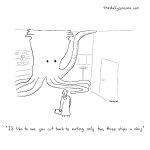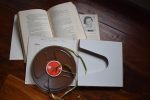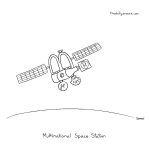Why do we love brisket so much? (photo from Jewish Post & News)
When Ricki Silver was leaving for Toronto to visit her family, she faced a dilemma: Do you continue the brisket tradition with the skyrocketing price? The plaintive cry of her granddaughter Charlie – “Bubba, are you bringing the brisket and the gravy?” she wailed over the phone – answered the dilemma. Silver had no choice but to continue her more than 40-year tradition and shlep the brisket to Toronto, cooked and ready to enjoy.
Why do we love this rather tough cut of meat so much? Why has the price hit the roof? Why do so many Jewish people feel their holiday table is empty without a brisket? Why do people treasure and brag about their own brisket recipes? And what are we going to do with this time-honored Jewish tradition now that brisket is just so popular and expensive?
“Brisket is one of the tastiest cuts, hands down, just unbelievable,” according to butcher Al Jones.
Because of this, the demand has gone up, particularly as more people have smokers, slow cookers and backyard barbecues. Jones has found that brisket customers are younger and watch cooking shows, so they are more inclined to try new recipes. At the same time, the price of beef has been steadily rising and shows no signs of changing. This is a function of the Canadian dollar, global economy, climate change and farming practices. “Farmers are using their fields to grow crops that can be used for making gas,” said Jones. This results in higher costs to grow the corn needed for cattle grazing.
Jews have been eating brisket for what seems like forever and, according to Matthew Goodman in his charming cookbook Jewish Food: The World at Table, this brisket business began at the end of Genesis 32 when Jacob had an attack from an angel and injured his thigh vein. Jews stopped eating the cow’s hindquarter. Plus, kosher meat requires quick preparation so the meat is not fully aged and tenderized. The result is that Jews had to find other ways to make meat tender, says Goodman. Brisket, with its need for slow cooking, is simply the perfect food.
Meat, including brisket, is also a cornerstone of Jewish deli food. David “Ziggy” Gruber, who is featured in the documentary Deli Man, said he had a calling to continue this style of cooking. “I feel my ancestors right next to me. It makes me happy,” he says in the film. Perhaps this is what drives many of us to pine for brisket and have it on our holiday table.
“Everyone has a brisket story,” writes Stephanie Pierson in her book The Brisket Book: A Love Story With Recipes, and often “my way is the only way.”
In my Thursday lunch group, one person swears by onion soup, others marinate in different concoctions involving either cola, beer, coffee, soy sauce or orange juice. Even the most uncompetitive person is likely to have a strong opinion on how to make the best brisket. Jones recommends avoiding the use of salt, as this tends to make the meat tougher and he believes that marinating is crucial.
Competition is intense on the price front and everyone seems to be trying to find a good buy, but price should not be the only consideration – quality counts. Jones said people should buy their meat from a reputable butcher to make sure that it has been hung and aged properly. He recommended it have a bit of fat on it. “That is why knives and forks were invented a few hundred years ago,” he said. You need the fat to keep the meat moist and tender, he explained. Just cut it off after the meat has cooked.
So, what is with this brisket love affair? No question, once you go through the days of marinating, cooking, cooling, slicing and reheating, brisket is a totally forgiving cut of meat. If your guests are late, forget to come or are impossible to please, brisket is your most reliable main course. This slab of meat never gets dry, everyone loves it and leftovers are even better than the meal. For Silver, there are four food groups: “meat, vegetables, dairy and brisket.”
Brisket keeps us connected to our past and elevates our celebrations to a special event. Our traditions keep the holidays alive and bring family and friends together. Many of us have our own superior brisket recipe passed down from one generation to another and strong memories of food prepared with love. This brisket food chain tells a story that deserves to be preserved.
Fern Swedlove is a Winnipeg freelance writer. A longer version of this article was published in the Jewish Post & News.









